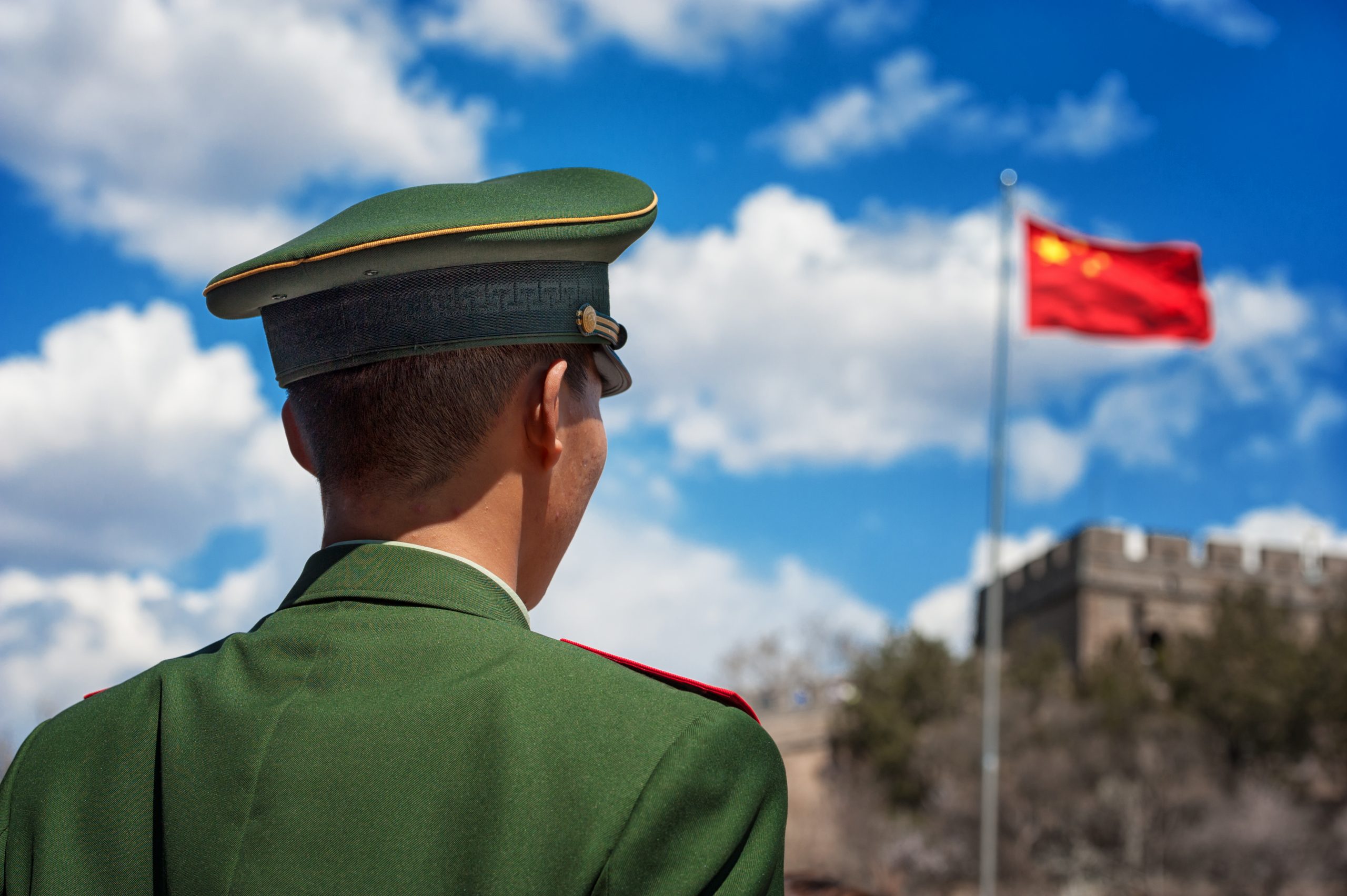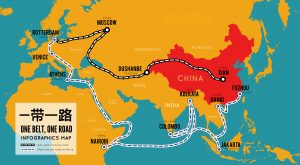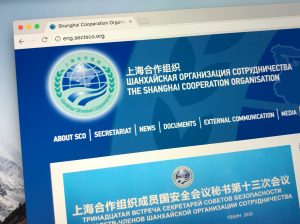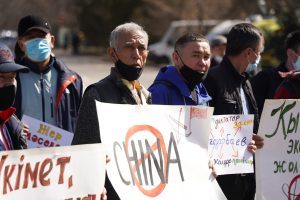Emerging Forms of Pax Sinica in Tajikistan and Cambodia
This piece is a collaboration between the Foreign Policy Research Institute and the Oxus Society for Central Asian Affairs.
In recent years, Tajikistan has made a habit of parading its new Chinese weapons systems. With perennial concerns over the stability of its southern border with Afghanistan, Tajikistan is reliant on external powers for its security. In many ways, Dushanbe is mirroring developments in South East Asia.
In 2019, Cambodian leader Hun Sen revealed in a Facebook post that China had pledged to provide $89 million USD worth of military aid to his country, increasing Beijing’s share of Cambodia’s total arms purchases, which stood at 45.2 percent from 1999-2018. In his post, he wrote that: “As comprehensive strategic partners and ironclad friends, we are siblings who share a single future.”
Isolated; increasingly centralized; debt-burdened; and dependent on China as an economic and security provider, Tajikistan and Cambodia are at the forefront of an emergent Pax Sinica. As scholars note the securitization of the Belt and Road Initiative, these countries may offer a glimpse into China’s strategic ambitions for the region.
Common Legacies
The ruling regimes in both Tajikistan and Cambodia emerged in the midst of brutal civil wars. Cambodian strongman Hun Sen rose to power in the late 1970s with Vietnamese support in ousting Pol Pot’s genocidal Khmer Rouge regime. In 1993, Sen lost a popular election, resulting in a controversial power-sharing agreement with Prince Norodom Ranariddh. Within four years, Sen had launched a successful coup against his rival, cementing his unchallenged authority over the country.
Following his seizure of power, Hun Sen turned to China for financial support. Between 1997 and 2005, China provided some $600 million in investments, grants, and foreign aid. An additional $600 million was pledged in 2006. In the decade since, China has become Cambodia’s largest trade partner. In 2019, bilateral trade between the two was valued at $9 billion USD, with Chinese goods representing over 37 percent of Cambodia’s total imports. These economic ties have provided a crucial source of patronage for Hun Sen’s regime.
In 2017, Sen launched a sweeping purge against the country’s opposition and independent media, accusing them of collaborating with the West. While international leaders condemned these actions and announced sanctions, Chinese companies quietly pledged over $7 billion USD in infrastructure development. At the time, Chinese Foreign Minister Wang Yi offered his diplomatic support, telling his Cambodian counterpart: “China supports the Cambodian side’s efforts to protect stability and achieve economic development, and believes the Cambodian government can lead the people to deal with domestic and foreign challenges.”
After Tajikistan’s civil war ended with a peace deal in 1997, the opposition were given positions in government and the leading opposition group, the Islamic Renaissance Party of Tajikistan (IRPT), was able to participate in elections, winning a symbolic two seats each time. But as Emomali Rahmon has consolidated power, Tajikistan has also seen its post-civil war consensus collapse. In 2015, Tajikistan’s Supreme Court declared the IRPT, the country’s second-largest party, to be a “terrorist organization” and banned it in 2015, sparking international condemnation.
Much like Cambodia, Tajikistan has benefitted from its closer ties with China at a time of growing political isolation, receiving credit, investments, and cutting-edge equipment for its feared security services. Under the framework of the BRI, China has constructed a sophisticated surveillance system in Dushanbe for its “Safe City” program. These deals have only emboldened Rahmon. In January 2020, more than 100 Tajiks were charged with membership of the banned Muslim Brotherhood, with thousands more questioned by the Tajik security services. The dragnet included professors, imams and Arabic-language instructors.
A Powerful Patron
In the early 2000s, China began rapidly expanding its defense cooperation with Cambodia. From 1999 to 2018, Beijing saw its share of Cambodia’s arms market swell to 45.2 percent. Since 2019, China has issued a sizable $84 million USD grant for the modernization of the Royal Cambodian Armed Forces, including equipment provisions for aircraft, armoured vehicles; as well as the construction of training facilities. It has also funded a substantial number of scholarships for Cambodian officers to train in China.
Like with other parts of the world, joint Chinese military exercises have become more commonplace. In March 2019, both China and Cambodia conducted a large-scale military training exercise known as “Golden Dragon,” involving some 3,000 troops and armoured vehicles. Phnom Penh sees Chinese patronage as crucial in securing itself against powerful neighbors such as Vietnam and Thailand. With respect to the latter, longstanding border disputes have proven a source of tension, stoking nationalist fervor on both sides of the border.
Tajikistan faces similar problems. Communal violence and armed clashes have remained commonplace along the Ferghana Valley, where it shares common borders with both Uzbekistan and Kyrgyzstan. Meanwhile, Tajikistan’s 1,344-kilometer border with Afghanistan saw violent incidents double between 2010 and 2017. Dushanbe has also seen a high number of its citizens fighting in conflicts in the Middle East, placing it third-highest in the world per capita, with fear of large-scale returns putting the regime on high-alert.
Developments such as these have also caused alarm in Beijing, which is pursuing an unusually interventionist course in Tajik politics. Documents leaked to the New York Times last year show Chinese President Xi Jinping expressing concern that Uyghur fighters returning from Syria could use Tajik territory to get home. At the time of writing, Chinese paramilitary units patrol the country’s mountains and have established a small base in the region, the first of its kind in the former Soviet Union. China has also been investing in capacity-building, with reports suggesting it has issued grants for the construction of up to 40 new border posts in Tajikistan since 2016. In addition, new equipment has been provided to Tajik border guards, including mine-resistant patrol vehicles.
Like Cambodia, Tajikistan has seen benefit in its relations with China. At present, 97 percent of Dushanbe’s defense support comes from Russia, but like the rest of the region, China’s growing security presence may grant the region better bargaining power with competing patrons. Tajikistan and China conducted their first bilateral military exercise in 2016 involving some 10,000 troops.
Dangerous Dependence?
Beijing has used its growing leverage to gain political support from Dushanbe and Phnom Penh. In 2019, after Turkey deported Uyghurs to Tajikistan, Dushanbe immediately repatriated them to China, where they were detained on arrival. Tajikistan is also one of two Central Asian states to have signed a letter to the UN defending Beijing’s policies in Xinjiang. This is a pattern that played out over a decade prior in South East Asia. In 2009, Cambodia deported twenty Uyghurs back to China, knowing that these individuals would likely be executed.
The nexus of strategic and economic access has also heavily favored Beijing while fueling local patronage networks. In January 2020, for example, President Rahmon changed Tajikistan’s investment laws to to allow the aged Talco aluminum plant, which benefits Rahmon family bank accounts and uses up to 40 percent of the country’s power, to receive a $545 million upgrade from the state-run China Machinery Engineering Corporation. Dushanbe has also given tax breaks and mining concessions to TBEA, the Chinese company that built the capital’s new heating plant.
Similar developments have been underway in South East Asia. China is now Cambodia’s largest investor and trading partner. China has increased its investments in Cambodia to around $1 billion USD – equivalent to 29.92 percent of all investments in 2016. China has also made a flurry of economic agreements in recent years, including a deal to allow Huawei to build Cambodia’s 5G network.
Both Tajikistan and Cambodia are among the seven countries whose debt to China amounts to more than 25 percent of their national GDP. Tajikistan’s external debt has doubled during the past decade, with China owning $1.2 billion, just under half of the country’s total debt. In the past, Tajikistan has paid off debts to China by ceding mining rights, and even 0.7 percent of its territory in a contentious border agreement. Similarly in 2008, Hun Sen granted a 99-year land concession in Koh Kong province to the private Chinese company Union Development Group. The 45,000 hectares of real estate and 20 percent of Cambodian coastline was slated to become a tourist hub, but now appears set to host Chinese military facilities. As noted above, Tajikistan has also played host to Chinese strategic forces in return for Beijing’s patronage and support.
Unlike Cambodia, Tajikistan has been able to maintain ties with Russia to offset dependence on China, but the gap is closing. If the country’s leaders fail to balance external relations, they may find themselves facing a more assertive Beijing.
Bradley Jardine is a research consultant at the Oxus Society for Central Asian Affairs and a Global Fellow at the Wilson Center’s Kissinger Institute on China and the United States. His research focuses on China’s role in Central Asia. Follow him on Twitter @Jardine_bradley.




